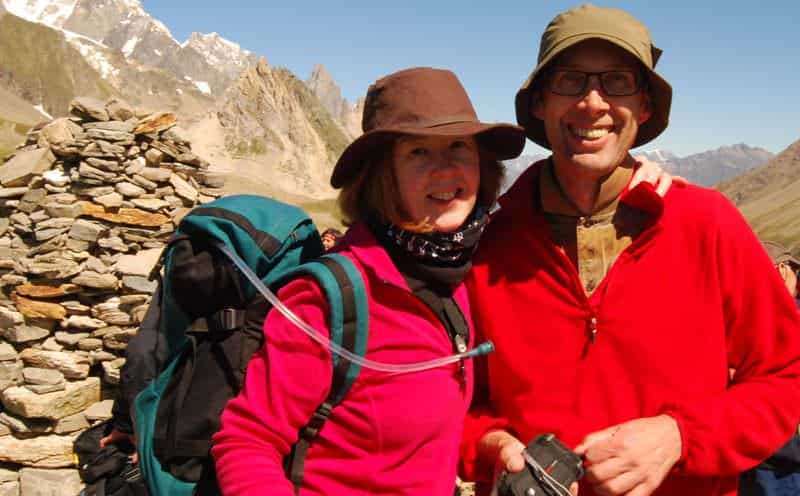
Trekking Guides and their qualifications
Although often referred to as Guides, the professional qualification for British hiking leaders is the accreditation as an International Mountain Leader (IML) or, for the French, Accompagnateur en moyen mountain. IMLs are highly trained and have a wealth of experience and knowledge about Alpine mountain environments before they are accepted on to the training courses. Most IML take between three and five years to qualify and have to go through specific summer and winter training and subsequent summer and winter assessments in the mountains of Europe. Aspirant IML are only allowed to progress to the next level once they have passed exams: there is no by-pass or quick route to the qualification. Having passed all the criteria they become fully active members under the British Association of Mountain Leaders (BAIML) – the national body that oversees the scheme. There are currently around 400 members in BAIML.
Trekking Guides’ experience
International Mountain Leaders will have already gained other mountain qualifications prior to being accepted on to the IML training. Many will have walked and climbed all over the world, have extensive summer and winter experience whether it is pleasant walking in summer conditions or snow shoeing in a winter white-out. Map reading, navigation, rope work, group management, helicopter rescue and foreign language skills are some of the many skills that are required.
Make sure your trekking Guide is legal
It is a legal requirement to have the IML qualification when leading in the Alps and anyone guiding clients without the badge is breaking the law and risks imprisonment. The French, Italian and Swiss authorities take it very seriously. And although some people may be encouraged to book an unqualified and cheaper ‘guide’ it is a false economy.
The role of a Trekking Guide
IMLs will take care of the checking-in at hotels and highlighting any special requests you may have when staying overnight. They will look after any transportation needed en-route, organise lunches, know the best mountain cafés on the trail and suggest things to see that cannot be found in a guide book. Above all, they set the pace of the day’s walk, can judge their clients’ fitness level and make sure that each member of a guided trek has their expectations filled. Depending on the weather conditions and the conditions of the trail, the IML may choose to walk at the front, keeping the group together, let everyone spread out and walk at their own pace or ‘lead from the back’ and observe the group from behind, meeting at pre-arranged places on the trail.
Most people, however, book an IML for peace-of-mind. They take away the stress of route finding, ensure that the day will run smoothly and, most of all, be able to act quickly if an emergency happens. Accidents are not common on the Tour du Mont Blanc, but being able to organise a helicopter rescue with minimal fuss is essential in an emergency – particularly if the weather is poor. The IML will also have knowledge of the local flowers, birds, wildlife, geology and history of the mountains.
For more information about British International Mountain Leaders, visit www.baiml.org
 Tour du Mont Blanc
Tour du Mont Blanc